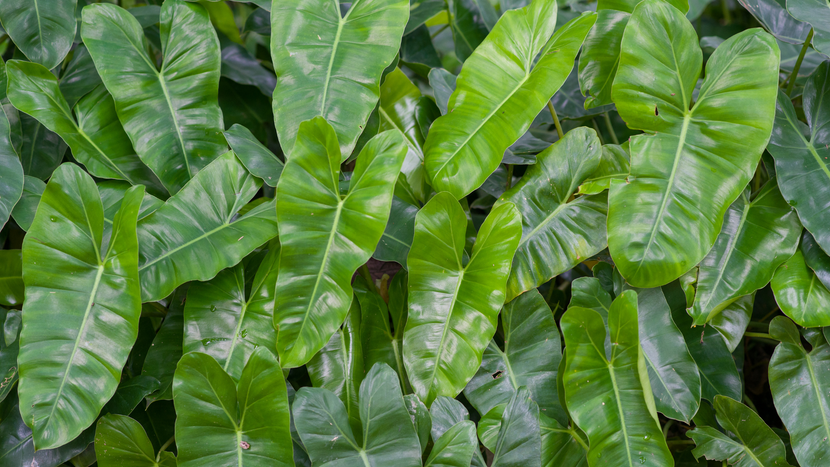How to Care for Philodendron
Plant Guide

Ground Rules

Light
Philodendrons tolerate low light levels, but they do grow faster in bright, indirect sunlight. You must avoid placing your philodendron in direct sunlight because this could burn the leaves quickly.
For example, Monstera Deliciosa leaves must receive bright, indirect sunlight to allow their leaves to split. Also, philodendron micans plants have delicate leaves that will easily burn if they are in direct sunlight.

Water
We recommend that you water your philodendrons less frequently than you would expect to. When philodendron plants are too wet, their roots suffocate due to a lack of air. The best way to tell if your plant is ready for water is to stick your finger in the top inch of the potting mix; if it feels dry to the touch, then it is time to water.
Another problem with overwatering your houseplant is that its root system could drown and cause root rot disease. As long as your plant has well-draining soil conditions and a pot with excellent drainage holes, you should be in good shape.

Soil
Philodendrons do best in loose, well-drained soil that is high in organic matter. They will grow in 100% sphagnum peat moss. Soilless mixtures such as peat-vermiculite or peat-perlite are also satisfactory.
We recommend that you use Espoma organic potting mix. A trick we have tested (and approved) is creating a mixture of 50% Espoma Organic Potting mix with 50% Espoma Organic Cactus mix. The cactus soil has larger particle sizes that allow for better drainage.

Food
Fertilize philodendrons regularly during the growing season. There are two basic ways to feed Philodendrons: a time-release granular product such as Osmocote Plus Indoor Plant Food or a water-soluble fertilizer such as Jack's Classic Houseplant Special.
Time-release fertilizers are the easiest and safest to use. They are great for beginners. Sprinkle the recommended amount on the soil surface, and every time you water, you will be feeding the plant.
Water-soluble fertilizers are a little harder to use. You will need to add the required amount to your water each time you water during the growing season.

Temperature
Philodendrons are tropical plants and do not tolerate cold weather well. If you are placing your philodendron outside, make sure temperatures do not go below 55 degrees. Otherwise, it is best to keep it inside at room temperature.

Toxicity
Philodendrons are unfortunately mildly toxic to household pets. If ingested, it may cause irritation and swelling of the mouth, drooling, or vimitting. If this happens, flush your pets mouth with water to remove residual toxins and take them to the veterinary clinic.
When Should I Repot My Philodendron Plant?
Why Are The Leaves Of My Philodendron Plant Yellow And Wilting?
Does My Philodendron Have Problems With Pests?
How to Propagate Philodendron
Types of Philodendron Plants:
| Name: | Leaf Color: | Habit: |
|---|---|---|
| Micans | Velvet green and purple | Climbing |
| Prince of Orange | Orange, neon yellow, bronze | Upright |
| Brasil | Light and dark green variegated | Climbing |
| Congo Rojo | Blackish purple leaves with red stems | Upright |
| Lickety Split | Green with fenestration | Upright |
| Pink Princess | Pink and green variegated | Upright |
| Hope | Green with fenestrations | Upright |
| Little Hope | Green with fenestrations | Upright, compact |
| Birkin | White and green varigated | Upright |
| Lemon Lime | Electric yellow | Upright |
| Moonlight | Green and yellow | Upright |
| Painted Lady | Pink, green, and yellow variegated | Climbing |
| Giganteum | Green, ruffled | Upright, oversized leaves |
| McColley's Finale | Red, green, and bronze | Upright |
| Cobra | Green and white variegated | Climbing |
| Thai Sunrise | Yellow and green variegated | Upright |
